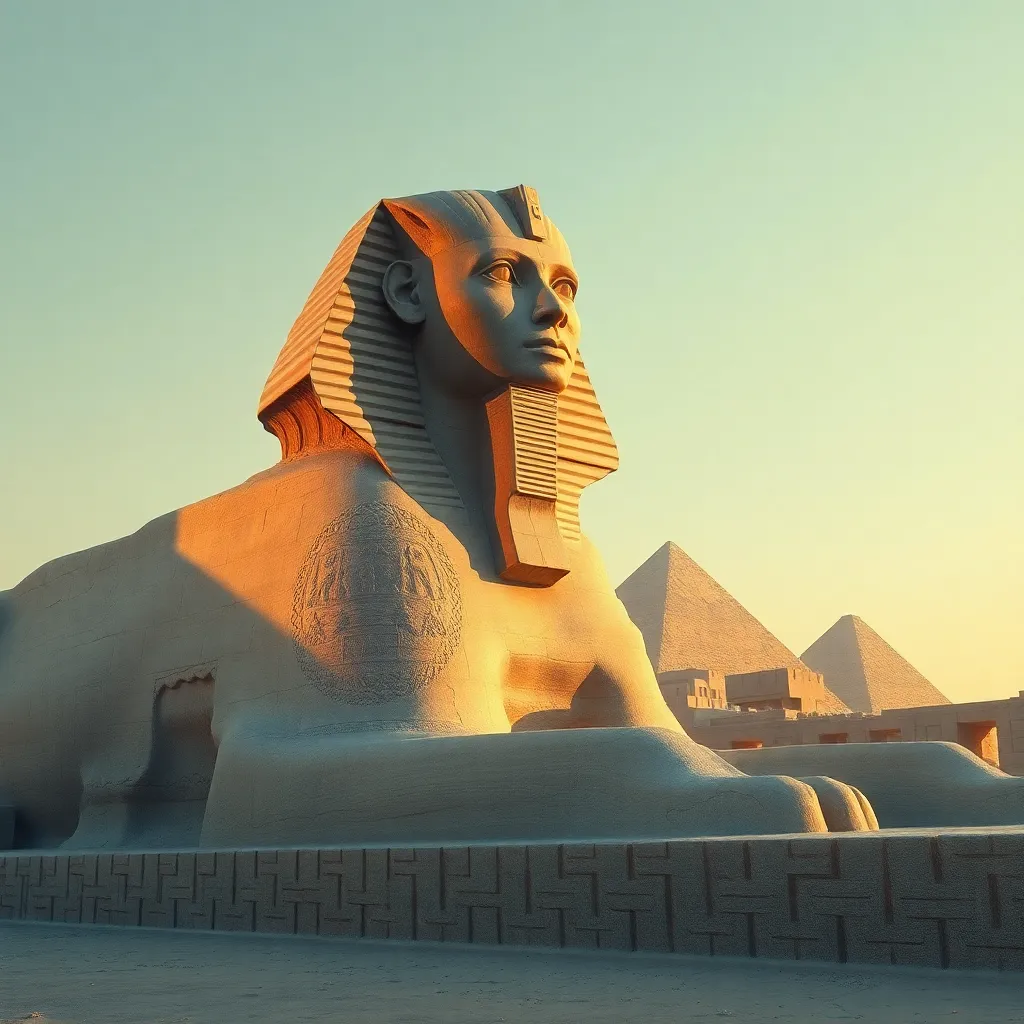The Sphinx and the Power of the Riddle
I. Introduction
The Sphinx is one of the most enigmatic figures in mythology, renowned for its imposing presence and captivating riddles. This creature, often depicted as a lion with a human head, has fascinated civilizations for centuries. Riddles, on the other hand, have held an important place in ancient cultures, serving as a means of storytelling and a test of intellect. In this article, we will explore the significance of the Sphinx and its riddles, examining their impact on literature and psychology.
II. Historical Context of the Sphinx
The Sphinx has roots in both Egyptian and Greek mythology, evolving in its representation and significance over time. In Egyptian culture, the Sphinx was a symbol of strength and protection, often guarding tombs and temples. The Great Sphinx of Giza, one of the most iconic monuments in the world, embodies this aspect of guardianship.
In Greek mythology, the Sphinx took on a more sinister role as a creature that posed deadly riddles to travelers, devouring those who could not answer correctly. This is most famously illustrated in the myth of Oedipus, where the Sphinx presents its riddle to Oedipus, challenging his intellect and ultimately leading to his tragic fate.
The symbolism associated with the Sphinx in ancient civilizations is rich and varied:
- Guardian of sacred spaces
- Symbol of mystery and the unknown
- Embodiment of wisdom and knowledge
III. The Nature of Riddles
A riddle is a statement, question, or phrase that has a double or veiled meaning, requiring ingenuity to solve. Riddles are characterized by their playful nature and often involve wordplay, metaphor, or misdirection. Historically, riddles have played a significant role in storytelling and oral traditions, serving not only as entertainment but also as a means of teaching and preserving knowledge.
Some famous riddles from various cultures include:
- The Riddle of the Sphinx: What walks on four legs in the morning, two legs at noon, and three legs in the evening?
- Samson’s riddle from the Bible: Out of the eater, something to eat; out of the strong, something sweet.
- The riddle of the Riddle Master in Celtic legends.
IV. The Riddle of the Sphinx
The Sphinx’s riddle posed to Oedipus is perhaps the most famous riddle in literature: What walks on four legs in the morning, two legs at noon, and three legs in the evening? This riddle encapsulates the journey of human life, representing the stages of existence.
The answer, Man, signifies the transformation individuals undergo throughout their lives:
- As infants, they crawl on all fours.
- As adults, they walk on two legs.
- In old age, they often use a cane, symbolizing the third leg.
This riddle serves as a metaphor for human existence, encouraging reflection on the nature of life and the inevitability of change.
V. The Psychological Impact of Riddles
Solving riddles offers numerous cognitive benefits. Engaging with riddles can enhance critical thinking and problem-solving skills, as they require individuals to think outside the box and consider different perspectives.
Furthermore, riddles provoke emotional engagement and intrigue, drawing individuals into a world of mystery. The challenge of unraveling a riddle can be both satisfying and stimulating, making it an effective tool for mental exercise.
VI. The Sphinx as a Symbol of Mystery and Knowledge
The Sphinx embodies a duality as both a guardian and a challenger. It represents the fine line between knowledge and ignorance, posing questions that challenge one’s understanding of the world.
The themes of knowledge, ignorance, and truth are prevalent within the riddle itself. The Sphinx’s role in literature often symbolizes hidden knowledge, urging characters and readers alike to seek deeper truths.
VII. Modern Interpretations and Legacy
The influence of the Sphinx and its riddle extends into contemporary literature and media. Modern interpretations often draw on the Sphinx as a symbol of mystery and challenge, appearing in various forms across genres.
Riddles continue to play an important role in modern culture, seen in:
- Puzzles and games that promote critical thinking.
- Literature that incorporates riddles as plot devices.
- Movies and television shows that reference the Sphinx and its riddles.
The Sphinx’s enduring legacy is evident in art and popular culture, where it remains a powerful symbol of the search for knowledge and the mysteries of existence.
VIII. Conclusion
In conclusion, the Sphinx stands as a significant figure in mythology, embodying the power of riddles and their impact on human understanding. The exploration of the Sphinx and its riddles reveals deep insights into the nature of existence, knowledge, and the challenges we face in life.
As we continue to engage with riddles, we are reminded of their relevance in our lives, encouraging us to embrace the mysteries and challenges that come our way.
Let us delve deeper into the enigmatic world of riddles and explore the lessons they hold for our human experience.




